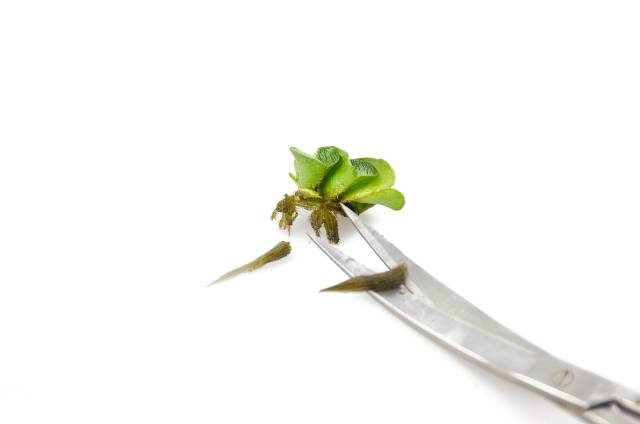The majority of the plants our customer order come in their emersed form (terrestrial form). Despite this fact, the plants need to be kept sufficiently moist during the preparation as well as during the planting phase. To do so you need to spray them with water from time to time, ideally using a spray bottle.
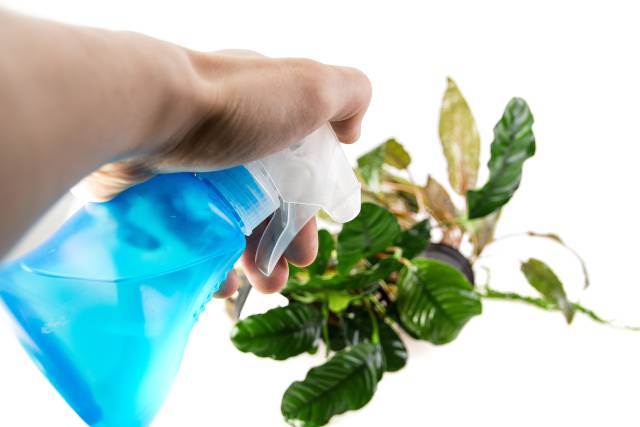
If the animals you keep in your tank are susceptible to foreign substances, please make sure you water potted plants as well as bunch plants separately for several days to weeks before you plant them in your aquarium. This measure is especially recommendable if you keep invertebrates like snails or shrimp in your tank. All our plants come from renowned European nurseries, mainly from Tropica from Denmark, Dennerle from Germany and from Anubias from Italy. These nurseries do not use pesticides, however, a certain level of fertilizer may be present, which may cause discomfort in very sensitive animals. We have not heard of any problems, but you still might want to be careful. A carefree alternative are our plants from tissue culture, also called in vitro plants. They are completely untreated and absolutely harmless for even the most susceptible animals. Just rinse off the sugary nutrient medium as well as possible.
Potted plants
Potted plants are usually cultivated above the waterline in the nursery, and they are kept in a pot with rock wool. As a rule, these plants are only in water up to their roots, whereas the rest of the plant grows above the waterline. These plants grow fast and are healthy, they are free from algae and other pests. The rock wool itself does not contain any nutrients, but it is known to hold on to the nutrients in the water, which is heavily fertilized in the nursery. For this reason, the rock wool around the plant roots needs to be removed as completely as possible before the plant is put into the aquarium.
With bulbous plants, plants with a rhizome or a rosette you proceed as follows:
Remove the pot first in order to get to the rock wool.
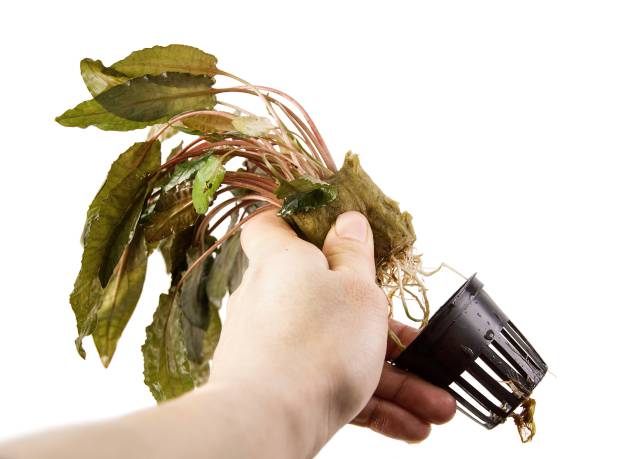
After the pot has been removed you can pull off large parts of the rock wool with your fingers.
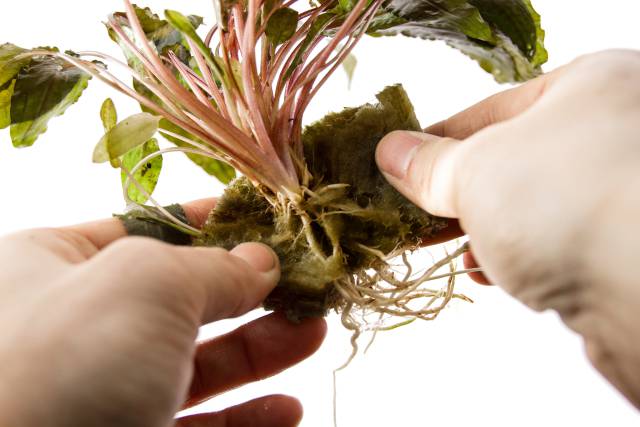
Now you cut back overgrown roots with a pair of scissors to a length of around 2 cm. Be careful not to damage the root stock, the so-called rhizome.
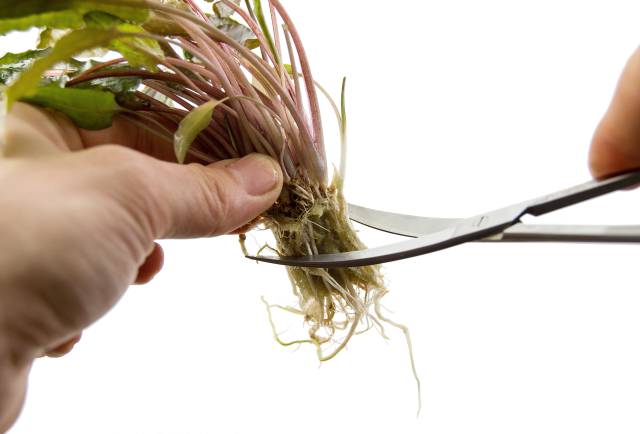
The last rests of rock wool that may still cling to the remaining roots can be rinsed off under temperate running water.
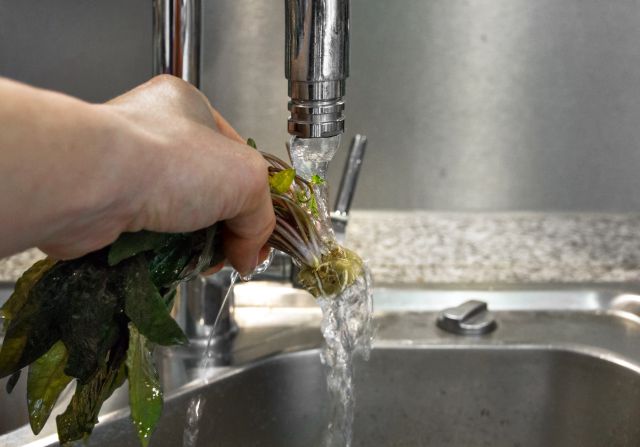
Any small rock wool remainders can be picked off with the help of a thin pair of tweezers (as you will use for planting later on).
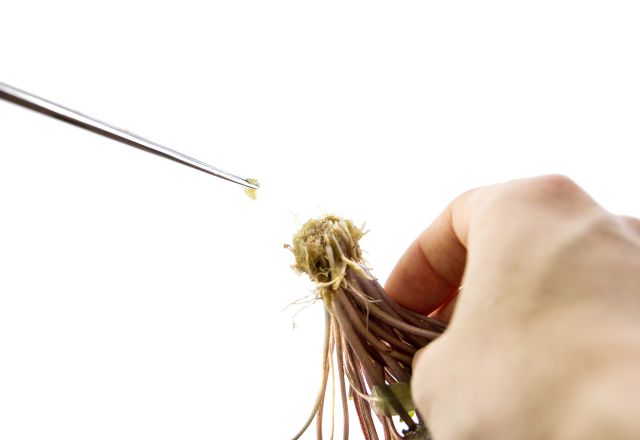
If you have rosette plants, look carefully. Often you have several individual plants in one pot, which can be separated from each other without effort, more or less. It is highly beneficial for these plants to separate them before planting.
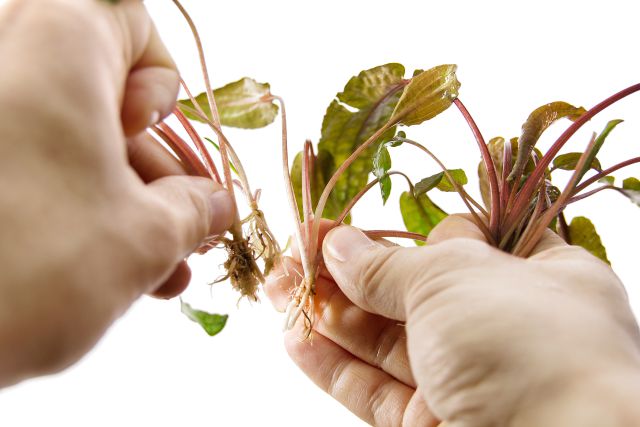
Removing rock wool from stem plants is easy and fast — simply cut off the rock wool shortly above the pot with a sharp pair of scissors.
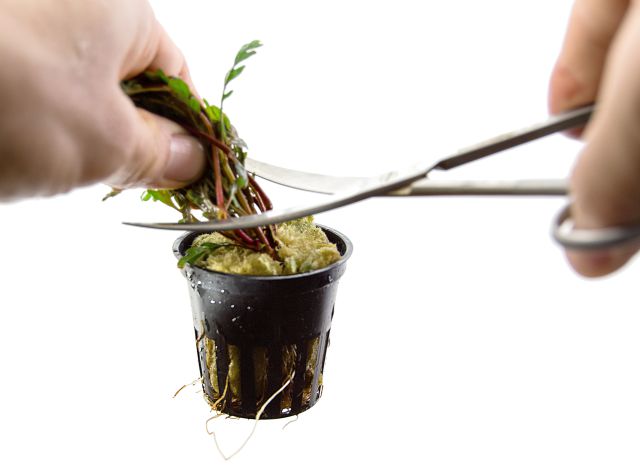
Only use the upper part of the stems you have just cut off. In good conditions, the plants will sprout new roots very fast in your tank and anchor themselves in the substrate. Divide the large bunch into smaller bundles before planting..
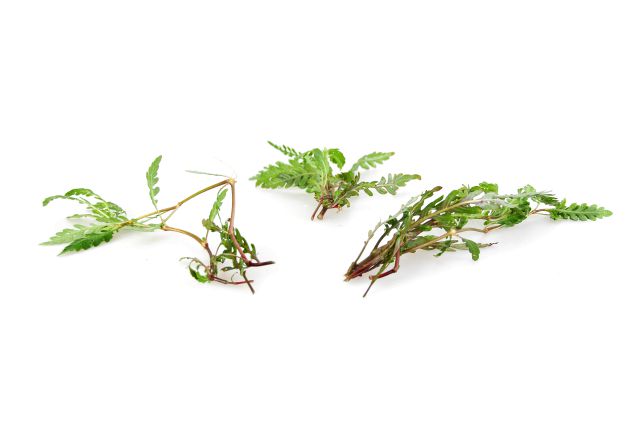
Îf you use the stem plants Hygrophila pinnatifida (as in the photo) or Staurogyne repens, make sure you remove the rock wool from the part in the pot and plant the lower parts of the stems, too. These plant species are known to sprout strong lateral shoots from the basis, too.
It may be very helpful to leave a small rest of the rock wool around the roots of (finely structured) ground-covering plants like e.g. Hemianthus callitrichoides "Cuba" or Glossostigma elatinoides and use this rest as an anchor. Cut off half of the rock wool with a pair of scissors.
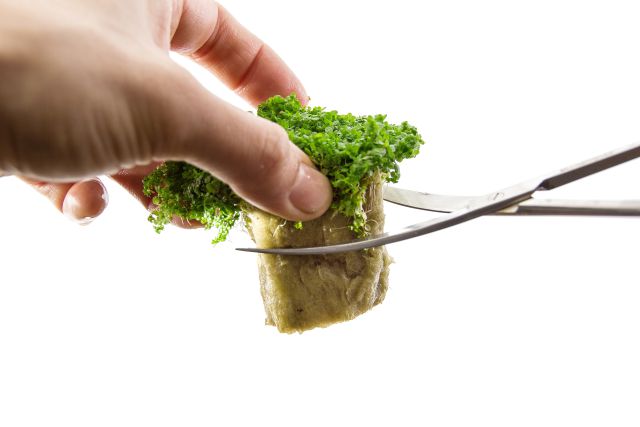
Afterwards you cut the potted plants into small portions, rock wool and all. It is much simpler to plant those smaller batches. The weight of the rock wool rests prevent the plants from floating to the surface later on.
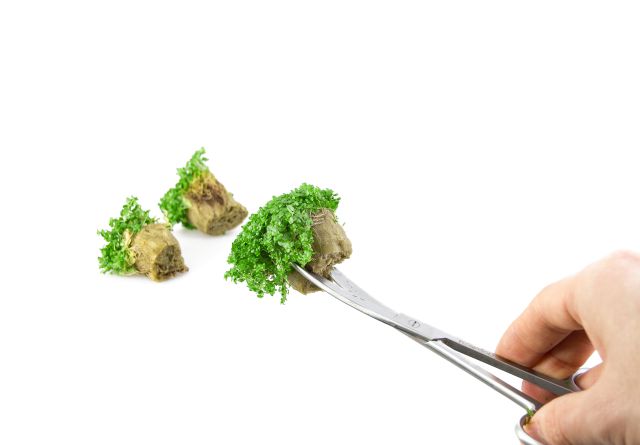
Plants from tissue culture
In vitro plants also grow in their emersed (terrestrial) form in the cups — under laboratory conditions in a sterile medium. These plants are guaranteed to be free from pesticides, algae, snails and other pests and overly large concentrations of nutrients. As the growth medium contains sugar, please make sure to rinse it off entirely to prevent bacterial blooms.
To prepare these plants for planting, take the entire portion out of its cup.
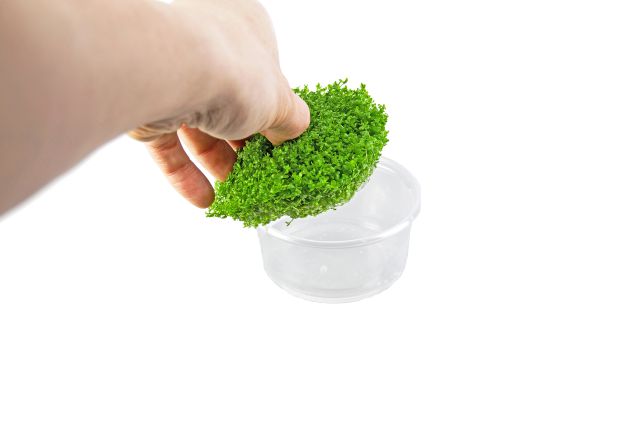
The nutritious gel can be rinsed off with temperate tap water easily and quickly.
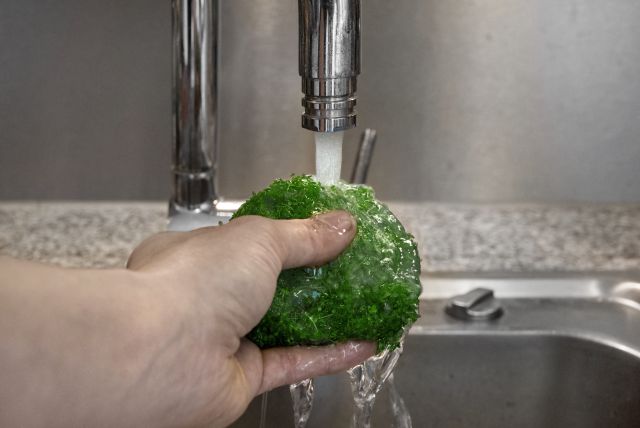
Alternative:
Very easy, but needs a little more time: Simply place the plant with the growth medium in a bowl of aquarium water and wait. After half an hour or so, most of the gel will have dissolved.
For planting, it is very helpful to divide the large portion into smaller pieces.
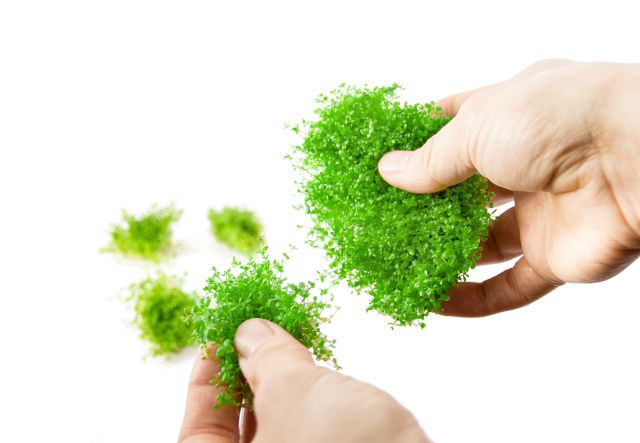
Bunch plants
Most plants offered in bunches are stem plants. The individual stems are usually bound together with a leaden band. Basically, you prepare bunch plants exactly like potted stem plants (please see above). Often, the band bruises the stems, and the damaged parts have a tendency of rotting away in the aquarium. For this reason it is recommendable to cut all the stems just above the leaden band with a sharp pair of scissors.
Only the cut parts above the band are used. If the conditions are good they will form new roots at the lowermost internodes of the stems and anchor themselves in the ground.
For planting later on, it is helpful to divide the large bunch into smaller units.

Mosses on stainless steel grids / moss pads
We are offering two different moss pads, one of them being a ceramic pad on which the moss is laid and covered by a stainless steel grid.
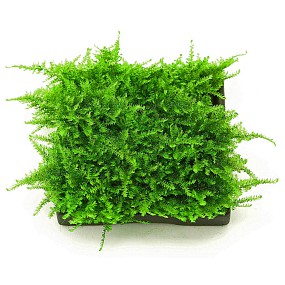
We cultivate these mosses submersed (under water) in our plant tanks in Braunschweig. In these tanks, we also keep shrimp to prevent algae from forming, however, we cannot totally exclude the appearance of small batches of algae. It is also possible that tiny snails and other very small animals may sit in the moss. You can put those pads directly into your aquarium without pre-soaking them. The weight of the ceramic pad is sufficient to keep the moss pads where you put them and to prevent them from floating.
If you want to use the moss in more places (without a pad), simply wait until the strands have grown and cut off as many as you need to bind or glue them to rocks or driftwood.
Besides the ceramic pads, we also offer moss pads made of stainless steel only. We purchase these moss pads from renowned European aquatic plant nurseries, mostly from Tropica or Dennerle.
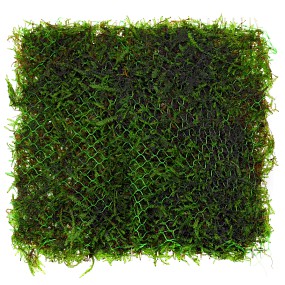
These pads are light-weight and flexible. They can be wrapped around thin branches of driftwood and make planting moss onto these pieces very easy and quick. If you want to use these moss pads as a ground cover, place them in the desired spot and weigh them down with some small pebbles.
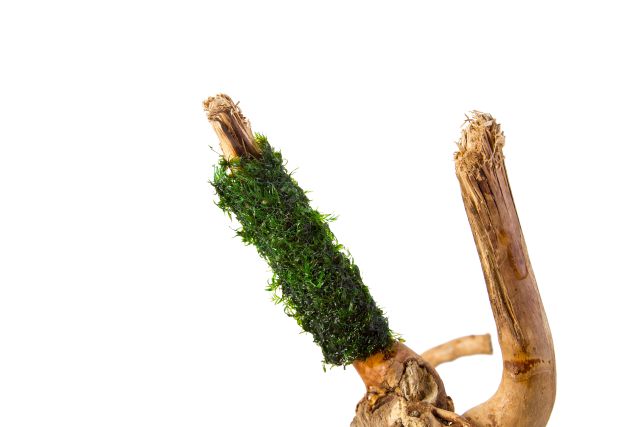
Floating plants
Floating plants do not really need much preparation. If desired, divide the portion into smaller units.
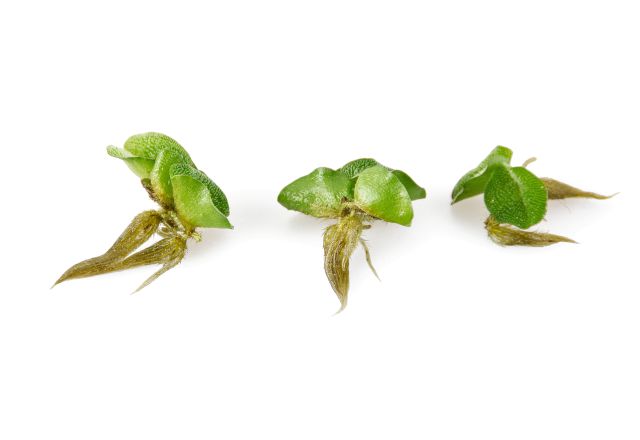
The roots of some floating plants like Limnobium laevigatum (South-American frogbit) grow out very long. If this phenomenon does not meet your taste you can shorten them somewhat without problems. (In the exemplary photo you can see a floating fern (Salvinia sp.), which has root-like underwater leaves but no true roots.)
